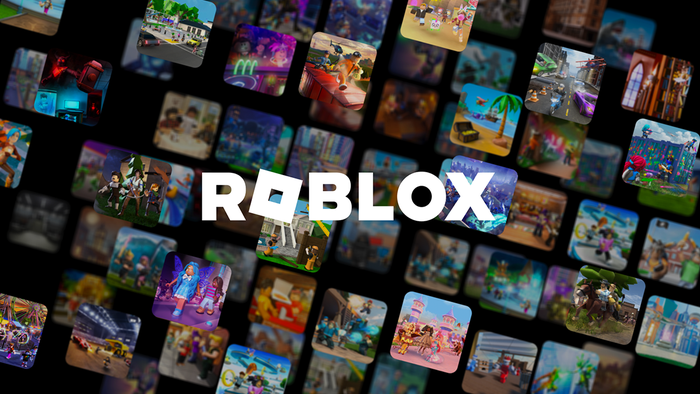What Assets to Provide When Starting Your Game Trailer Production
Once the game trailer production project has begun and it's time to get started on the trailer, you will need to provide some things to your game trailer producer. The more you can hand over, the better the end product is going to be.

Starting Game Trailer Production
Once the game trailer production project has begun and it's time to get started on the trailer, you will need to provide some things to your game trailer producer. The more you can hand over, the better the end product is going to be and the faster you're going to get it. If you can give us everything, or at least most everything, then we can sink our time into the quality of the trailer itself rather than creating assets for it.
The Overview of Your Game
You'll want to include the genre, a story Synopsis, the setting, the mood, art style, and objective of the game. We'll learn a lot more about it once we've received a copy of the game and can explore it thoroughly, but you'll want to set the pace to start. If you haven't already given your target audience and objective (which should happen during the bid/proposal process), you'll want to do that now.
Do You Have Quality Game Footage Already?
Whether or not you contribute footage is up to you. On the one hand, the production company is going to have robust systems that will capture game footage at a high resolution, smooth frame rate, and no stutter. Plus they have experience and are skilled at exciting camera work. On the other hand, capturing footage can be a very time-consuming aspect of game trailer production. Providing footage can reduce the time your production company needs to spend on that part of the trailer, freeing them up to focus on the other parts. Even if you prefer they capture all of the footage, it can still be beneficial to hand over what you have. In the past, I've received self-captured footage from the game studio that showed the kind of shots they wanted. Then I used that as a reference to capture all brand new 4K footage.
The Game & How To Play It
If you want us to capture the footage for you, we'll need a copy of your game. If your game has a multiplayer version, you'll want to grant several copies so we can have our digital crew along to help us capture every clip we need as often as we need to get it perfect. You're probably pretty good at your game since you're making it, but we have no idea what we're doing when we first drop into your game's world. Leave us with some strategies and best practices for playing. We'll practice your tips and tricks repeatedly until we look like pros. If we have to start from scratch that's going to take a lot longer to accomplish. And in that vein...
GameShark Me, Bro
 If there's anyone out there who never had the privilege of using or has even heard about GameShark; during the SNES/Sega Genesis/PSX/N64 days there was a cartridge or disc that you put into your console before booting up the game called GameShark (also it's competitor, GameGenie). This unlocked cheats and secrets for the game you were about to play. It took the magic out of the game, but damn it was fun for a short period.
If there's anyone out there who never had the privilege of using or has even heard about GameShark; during the SNES/Sega Genesis/PSX/N64 days there was a cartridge or disc that you put into your console before booting up the game called GameShark (also it's competitor, GameGenie). This unlocked cheats and secrets for the game you were about to play. It took the magic out of the game, but damn it was fun for a short period.
Keep the spirit of GameShark/GameGenie alive and give us all those glorious console commands or secret button combos that grant us God Mode, weapons, items, powers, resources, or whatever goodies you have stocked away 'in the back.' We'll also need console commands that allow us to hide the UI / HUD, separate the camera from the player-character, and disable the music track if that's not already in your game's options menu.
Giant Squid Studios provided us with a way to separate the camera from the player character which allowed for unique angles and creative shots.
Artwork
Give us ALL the artwork - All of them. Ok, maybe not ALL of them, but a lot. We won't use everything, but we can do a lot WITH a lot. Take our Azure Sky Project Game Trailer that we made for Burgee Games, for example. Brian gave us artwork of every weapon icon and all characters they had. Using that, I was able to make some fun graphics titles. We also used that to emphasize how many weapons and devices they had in the game which was a key feature of the game.
In-game artwork may not always cover what we need. Instead, original concept art and illustrations can be animated and used to build a story to drive the trailer. Bonus points if you can provide the project file separated into layers. Our Little Viking Game Trailer success was due in large to the fact that the game's developer, Karol, gave us with every bit of artwork he had. First, we photoshopped the Viking character into different parts so that we could animate him. Then we used the environment and game art to craft an entire story of a bored little Viking who just wanted to bash some rocks. Who can't relate to that?
Music & SFX
These two assets are only necessary to give if you (1) Have an original soundtrack and (2) Can't isolate music or sound effects from the audio settings menu in your game. Otherwise, the game trailer producer will be able to have music composed for your game and/or trailer, or we can produce high-quality pre-composed music of your choice.
Game Devs usually come to us to help them craft the idea for their trailer. Every so often, they will have a particular concept that they would like us to execute on. Read on if that is or will be the case for you.
The Script
If you've written the script yourself, you'll want to present this during the bidding/proposal process before the deposit and before any work on the trailer itself has begun. What you have in the script will affect the equipment, expertise, and time required to execute your idea. Let the game trailer production company know if you're not sure what direction you'd like to take the trailer and they can brainstorm some ideas for you.
Sometimes a traditional script just isn't enough. If there is little to no dialogue, monologue, or narration you'll want to go to an A/V (Audio / Visual) script. The difference here is one half of the page says what we're seeing while the other half explains what we're hearing. In these cases, it's strongly recommended you pair this with...
The Storyboard (or a Nice Chianti)
The storyboard is a series of drawings that show the critical frames of the video with a small description below each. If you're providing a script for the trailer company to follow, then the addition of a storyboard gives them a sense of what you want to see in the visuals. You don't have to be a crazy-good artist either. Simple stick figure drawings can really help put things into perspective. The storyboard isn't always necessary since some game trailers are all about showing off the general gameplay rather than precise visuals or gameplay. If the trailer is very story-centric, then a storyboard is recommended in those cases.
Here's the TL;DR list of things to hand to your trailer company;
The game's overview
Pre-captured game footage (for trailer use or production's reference)
The game with tips and tricks on how to play it proficiently
Cheat codes & shortcuts for quick footage capture
Weapons / Armor / Items
Powers / Abilities
God Mode
How to access the console and its commands
Hide UI / HUD
Isolate the camera from the player character
Disable the music track if the option doesn't exist in the game's audio settings
All the Artwork
Music
Sound Effects
Script (If you've written one)(Optional)
Storyboard (If you've made one)(Optional)
Once you've got this stuff ready to go, give us a poke, and we'll get started on your game trailer production!
Read more about:
BlogsAbout the Author(s)
You May Also Like









